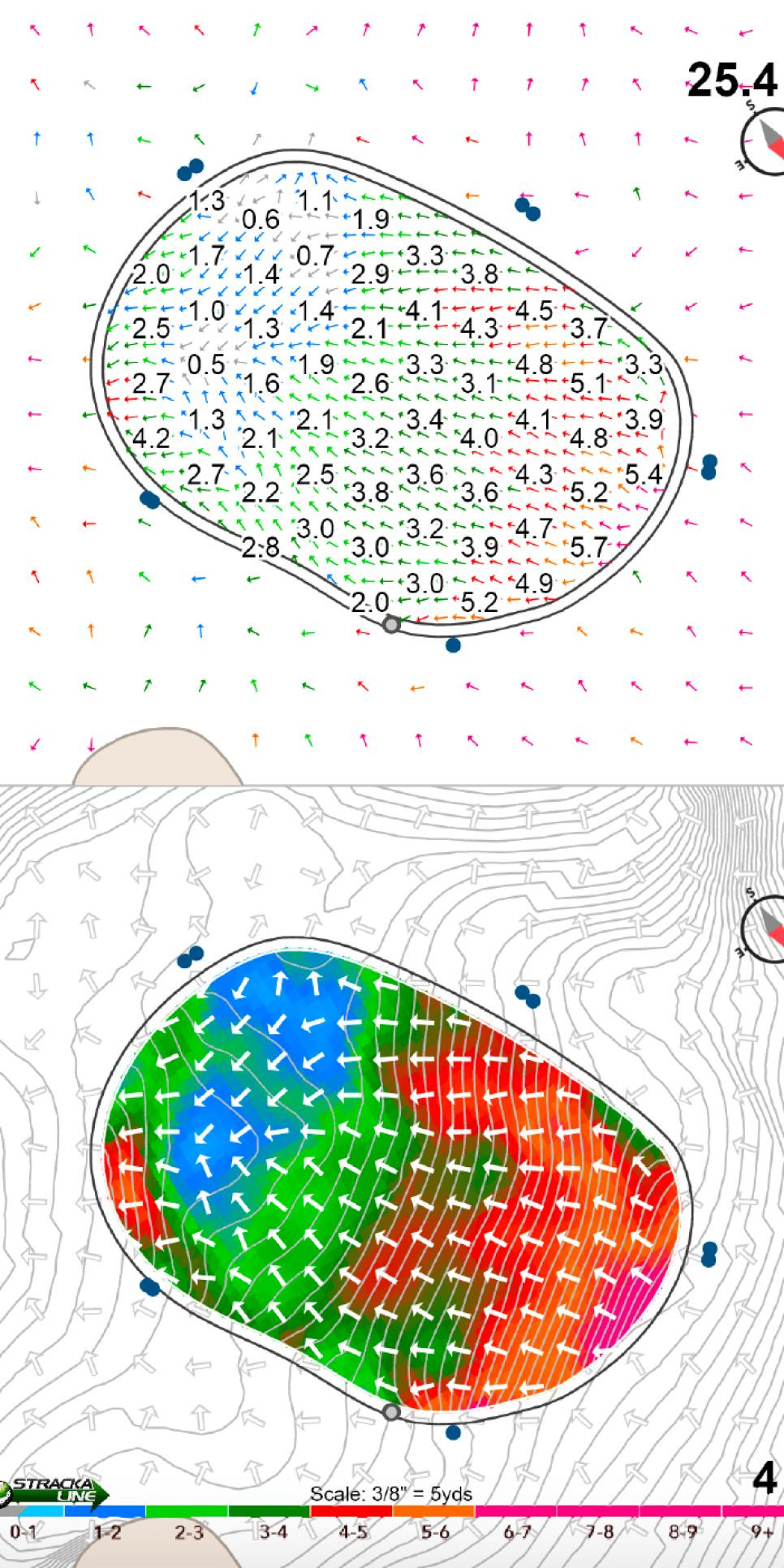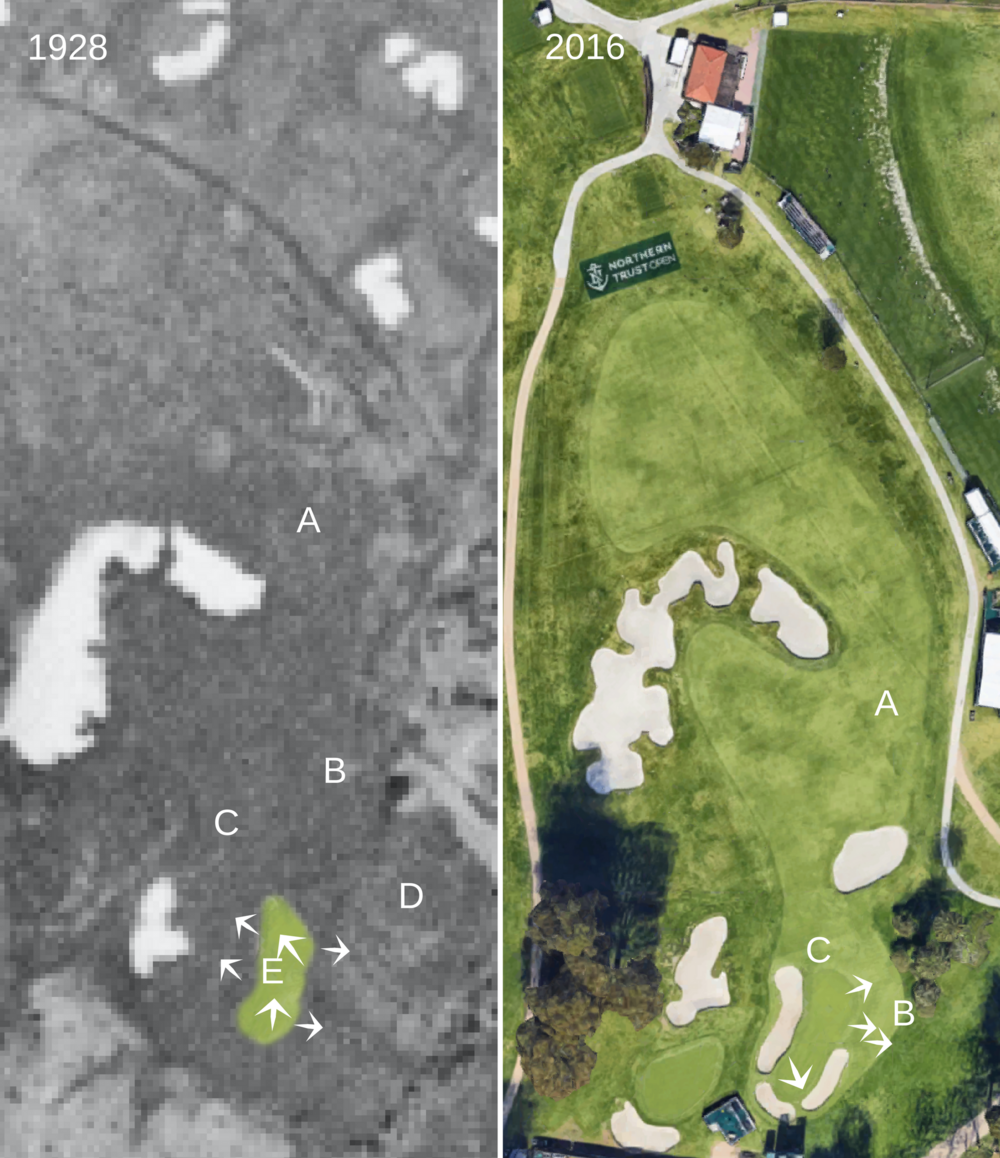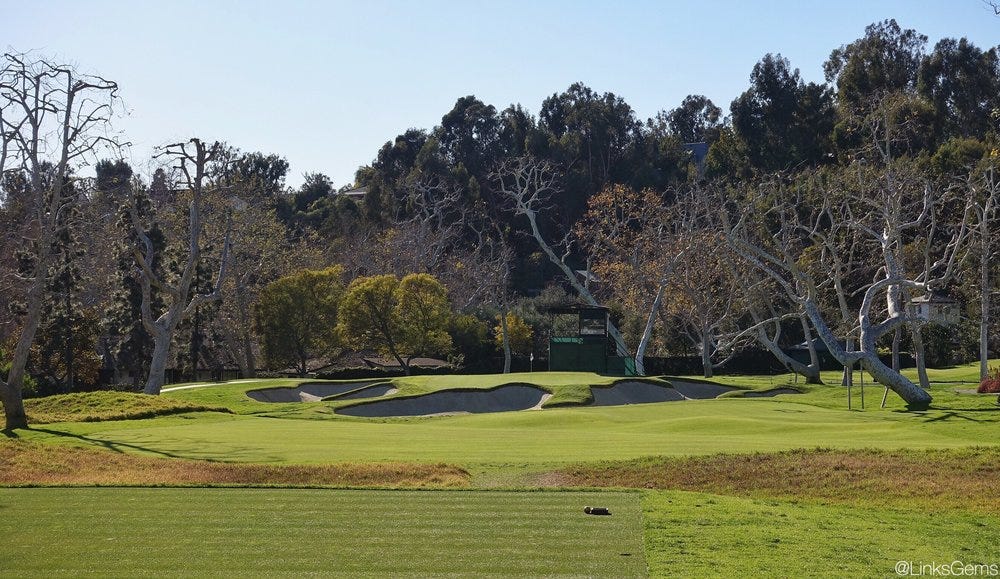Golf's Golden Age of Architecture Takes Center Stage at Riviera
Tiger returns to play one of the classic golf courses in America.
The PGA Tour makes its last stop of the “West Coast Swing” this week. The normal swing includes stops in Hawaii, Arizona and California, but the final stop is anything but normal. This week’s stop is at one of the most storied and revered golf courses on the planet - Riviera Country Club.
Photo: Golf Course Industry
Riviera has been a playground for the Hollywood elite for over 90 years. Members have included Charlie Chaplin, Walt Disney, Humphrey Bogart, Adam Sandler, Larry David and Tom Brady to name a few. Errol Flynn was once arrested trying to seduce a married woman in the clubhouse, but that kind of story may be for another article.
Riviera is the work of George C. Thomas, an amateur architect who agreed to do the project free of charge when commissioned by the Los Angeles Athletic Club. Thomas was a wealthy banker from Philadelphia, who along with regular golfing companions A.W. Tillinghast, Hugh Wilson, William Flynn and George Crump were founding members of Pine Valley. Thomas came from what became known as the “Philadelphia School” of golf architecture.
Moving to California after World War I, Thomas started working with William P. Bell. Together, they created some of the greatest courses in California, including Bel-Air Country Club, Los Angeles Country Club and this weeks location, Riviera Country Club.
Riviera Country Club sits on a small and relatively flat piece of land at the bottom of a canyon. It is here that Thomas designed and Bell created a masterpiece of minimalist golf course architecture without having to move much earth.
All eighteen holes at Riviera flow beautifully before coming to a crescendo going up a hill on the eighteenth to one of the most iconic clubhouses in golf. It is possible to do a deep dive into every hole at Riviera, but in this article the focus will be on the more famous and architecturally great holes by Thompson and Bell.
4th Hole - Par 3 - 236 yards
Photo: Golf Digest
The majority of Riviera sits in a canyon bottom and is relatively flat, the fourth hole is one of the exceptions to this. Here we see Thomas use the slope of the canyon to create a version of the Redan, one of golf’s most famous templates. In this case, the entire putting surface falls right to left, using the natural slope of the canyon. The maps below show you the severity of the slope on the right side of the hole. Players will be trying to use this slope to funnel shots to left pin locations as there is a deep bunker guarding the left side of the green.
Photo: Golf Digest
The great Ben Hogan once called the fourth “the greatest par 3 hole in America.” He may be correct, but PGA professionals may just call it brutal. Since 2016 it has been the most difficult par 3 to hit on tour, with only 33 percent of players finding the putting surface in regulation. Playing around 230 yards and into a prevailing wind, its stroke average has been over par for multiple years in a row.
6th Hole - Par 3 - 199 yards
Photo: Gary Lisbon Golf
The sixth hole is known worldwide for its unique pot bunker in the middle of the green. What most people don’t know is that it serves an architectural purpose other that aesthetics. By putting this small bunker in the center of the green, Thomas essentially created four separate quadrants or greens in one. Using back-to-front slope and sideboards, each pin location can be accessible with the right shot.
The genius in the center-green bunker is from the tee box, as it makes front pin locations and green quadrants very small. Professionals love playing shots to middle of greens when there is a front pin location, this deters them. The green complex slopes back-to-front, so a bunker shot to a front pin will be tough to stop, even for the best in the world.
Inevitably, fans will get to see someone hitting a flop shot or a chip while on the green to get over the bunker like Justin Thomas did last year with a miraculous par save.
Photo: Golf Channel
8th Hole - Par 4 - 433 yards
Photo: Stonehouse Golf
The eighth features a barranca that separates split fairways and has undergone plenty of changes over the years. The original barranca was washed away by a flood in 1939 and for decades the fairways were split with trees. In 2002, Tom Fazio redesigned the whole back to the more intended look.
Players will try to play the left fairway this week as it leaves a wedge into a fairly wide green. Missing the fairway can lead to some interesting lies and a bogey or worse.
10th Hole - Par 4 - 315 yards
Photo: Golf Digest
The back nine begins with Riviera’s most iconic hole, and some claim it to be the best short par four in the world. Interestingly enough, Thomas came back a few years after its opening and added extra bunkers as he wanted to make it more challenging.
Photo: Fried Egg
Technology in recent years has altered how professionals play the hole. What was once possibly the greatest strategic, short par four in the world has morphed into a driver up near the green and “see what happens.”
In 2014, less than 50% of players hit driver off the tee at the Genesis Invitational. By 2022, 97.4% of players were hitting driver and playing to the left side of the green. One can only hope that Riviera can find another 20 yards to lengthen this hole and bring the strategy back to its most iconic hole.
15th Hole - Par 4 - 487 yards
Photo: Bill Hornstein
While overshadowed by other holes, the fifteenth is an incredible work of architecture and the most difficult hole on the golf course.
Players are tasked with hitting a demanding left-to-right tee shot, while avoiding a deep fairway bunker on the right side. This leaves a mid-iron into a biarritz style green with two sloped sides and a low spot in the middle. The green sits perpendicular to the fairway and is considered by many to be the toughest green to read at Riviera.
An interesting thing to watch is what players choose to do off the tee box here. In recent years, Victor Hovland has hit driver down the 17th fairway which runs parallel to fifteens right side. Other players may start instituting this strategy if the PGA Tour does not deem it in-course out-of-bounds.
Photo: Golfweek
16th Hole - Par 3 - 166 yards
Photo: Fried Egg
The final of Riviera’s par threes, the sixteenth hole is one of the more spectacular displays of bunkering that you will see in American golf. Players are confronted with an exacting shot to a green that slopes severely from both the back-to-front and left-to-right.
Missing the green can be penalizing as the bunkers guarding it are some of the deepest that Riviera has to offer. Down the stretch, players will be looking to find the middle of this small green to ensure a par.
18th Hole - Par 4 - 475 yards
Photo: Links Life Golf
The final hole at Riviera Country Club is another of the iconic holes in American golf. The long par four climbs the canyon back up to the clubhouse. Players will be confronted with a partially blind tee shot with a fairway turning from left-to-right. Trees on the right force players to play shots to the left side of the fairway making the approach shot even longer.
Thomas brilliantly designed the eighteen green to sit at the base of a hill leading up to the clubhouse. This makes for a natural amphitheater and one of the best finishing approach shots in tournament golf.
Photo: theday.com
Riviera is truly one of the great championship golf courses in America and even without being overly long, has stood the test of time. This is a testament to the work of George C. Thomas and William P. Bell.
They took a very average to below average piece of property, one without ocean views like Pebble and Cypress or dramatic topography like Augusta and created a master class in golf course design.
By using strategic design and elegant bunkering, they created a golf course that has withstood the test of time and challenges the best players in the world to this day.
















